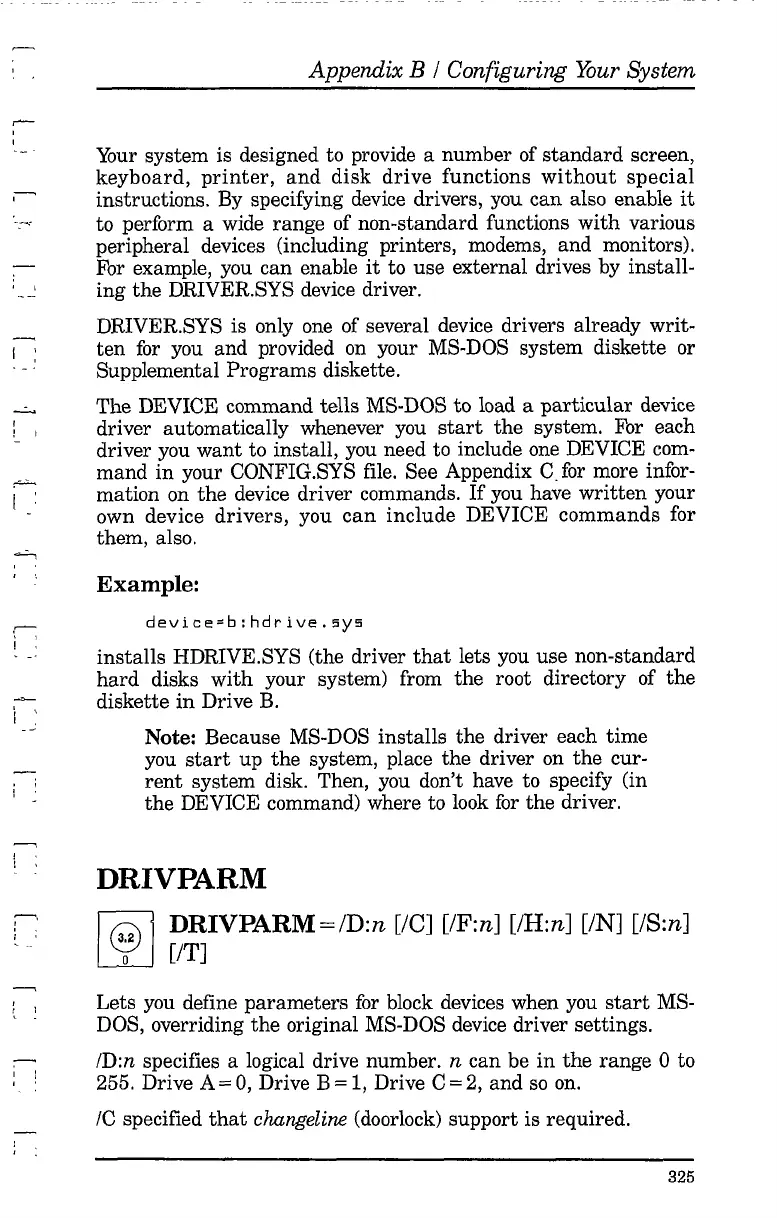I :
I
! I
i '
~
! ,
. ,
I
!
! ,
;-'.
: '
I I
, '
Appendix B I Configuring Your System
Your
system is designed to provide a number of
standard
screen,
keyboard,
printer,
and
disk drive functions
without
special
instructions. By specifying device drivers, you
can
also enable
it
to perform a wide range of non-standard functions
with
various
peripheral devices (including printers, modems, and monitors).
For example, you can enable
it
to use external drives by install-
ing
the
DRIVERSYS device driver.
DRIVERSYS is only one of several device drivers already writ-
ten
for
you
and provided
on
your MS-DOS system diskette or
Supplemental Programs diskette.
The DEVICE command tells MS-DOS to load a particular device
driver automatically whenever
you
start
the system.
For
each
driver
you
want to install,
you
need to include one DEVICE
com-
mand
in
your CONFIG.SYS file. See Appendix
C.
for
more infor-
mation on the device driver commands.
If
you have
written
your
own device drivers, you
can
include DEVICE commands for
them, also.
Example:
device=b:hdrive.5Y5
installs HDRIVE.8YS (the driver
that
lets
you
use non-standard
hard
disks
with
your system) from the root directory of
the
diskette
in
Drive B.
Note: Because MS-DOS installs the driver each time
you
start
up
the
system, place the driver
on
the cur-
rent
system disk. Then, you don't have to specify (in
the
DEVICE command) where to look
for
the driver.
DRIVPARM
~
1 DRIVPARM=
ID:n
[Ie]
[IF:n]
[lH:n]
[IN]
[lS:n]
9
[IT]
Lets
you
define parameters
for
block devices when
you
start
MS-
DOS, overriding the original MS-DOS device driver settings.
ID:n specifies a logical drive number. n can be
in
the
range °to
255. Drive A
==
0,
Drive B
==
1,
Drive C
==
2,
and
so
on.
IC specified
that
changeline (doorlock) support is required.
325
